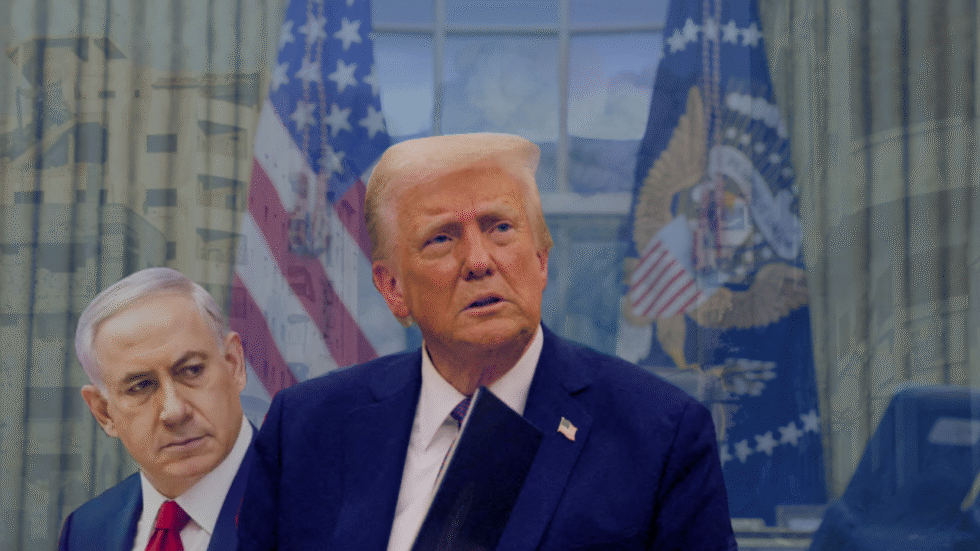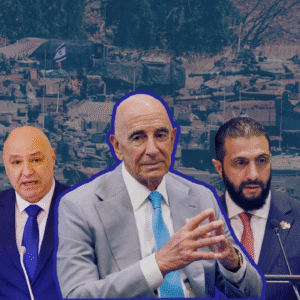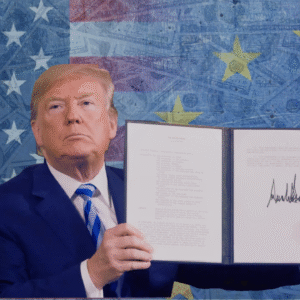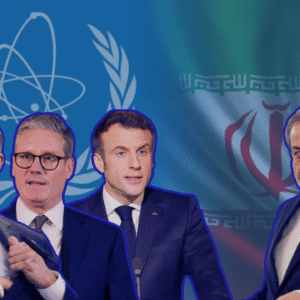Gaza 2.0: Trump’s Blueprint for Turning Gaza into a Laboratory of U.S. Power

“We’re going to take over the Gaza Strip… and turn it into the Riviera of the Middle East.” [1]
With those words at a White House press briefing on February 4, 2025, President Donald Trump reframed Gaza not as a humanitarian crisis but as a redevelopment prospect. That vision now sits at the core of his recently unveiled 20-point peace plan – a proposal that has dominated regional discourse in the wake of the ongoing war. [2]
The plan outlines Gaza’s governance under a “temporary transitional committee made up of qualified Palestinians and international experts,” overseen by a new body called the Board of Peace, to be “headed and chaired by President Donald J. Trump,” with former British prime minister Tony Blair among its senior members. It pledges the creation of a “special economic zone,” an American-led International Stabilization Force, and the “demilitarization of Gaza under independent monitoring,” with all military infrastructure “destroyed and not rebuilt.” [2, 3]
The language of redevelopment—technocratic, investment-driven, managerial—echoes Trump’s earlier declaration. What many had dismissed as campaign theater has hardened into policy architecture. By late August, a 38-page prospectus titled the GREAT Trust (Gaza Reconstitution, Economic Acceleration and Transformation Trust) was leaked to U.S. and Israeli media, laying out in striking detail a plan to transform Gaza into a high-tech enclave governed under an American-led trusteeship. [4]
Israel’s finance minister, Bezalel Smotrich, quickly reinforced this vision, describing Gaza as a “real estate bonanza” whose reconstruction would “pay for itself.” [5] His words revealed the underlying premise: Gaza’s devastation is not being confronted as a humanitarian crisis but monetized as a redevelopment opportunity. What emerges is not the traditional template of territorial conquest through military occupation, but a subtler form of dominion – one built on capital flows, subcontracted governance, and infrastructural control.
The scheme thus reveals its own contours: a logic of control, a machinery of profit, and the interests it is built to serve. Gaza, still in ruins, is being positioned not for recovery, but as a proving ground for Empire’s newest incarnation. The United States no longer stands merely as Israel’s patron or ally; it recasts itself as developer, digital custodian, and population manager. What is framed as reconstruction is, in truth, the rehearsal of an imperial order seeking permanence under the guise of renewal.
Historical & Theoretical Context: From Guns to Gadgets
Classical imperialism rested on conquest: armies that seized land, settlers who entrenched it, and legal regimes that codified foreign rule. Infrastructure was its hallmark: railroads, plantations, and mines designed not to sustain colonies but to extract their wealth.
Even after formal empires dissolved, their legacies endured. Trade patterns, institutions, and hierarchies kept former colonies tethered to global capital. Independence was largely nominal; currencies, debts, and trade regimes ensured continued dependence. And by the mid-twentieth century, this system was named neocolonialism – sovereignty in form, servitude in substance.
In the twenty-first century, Empire evolved again. It no longer required flags or garrisons; it operated through contracts, infrastructures, and code. Smart grids, digital ID systems, data centers, and algorithmic policing became its arsenal, embedding dependence into the very systems of daily life. The land provided the skeleton, while the digital layer became the nervous system. [7, 19]
As Naomi Klein argued in her study of disaster capitalism, crises clear the ground for speculative profit. [6] Reconstruction is not mere repair but redesign, turning essential services into revenue streams. Subjugation now comes not by soldiers’ boots but by concession agreements, licenses, and platforms that bind entire populations to external control.
Here, sovereignty migrates from states to systems. Land is recast as digital claims tradable in markets, surveillance embedded in AI-managed grids, and security outsourced to private firms. Scholars call this infrastructural sovereignty – authority ceded to networks that govern utilities, mobility, and data. [7] And now, Gaza in its shattered and depopulated conditions, is drafted as its laboratory, where war clears the ground, capital installs the systems, proxies administer governance, and control shifts from sovereign institutions to platforms. What is presented as development is, in reality, engineered dependency.
A New Imperial Fantasia
Trump’s February declaration did not remain in the realm of spectacle. Within weeks, his language shifted: no “forced” expulsions, he insisted, only “voluntary” relocation. [8] The pivot was rhetorical rather than substantive, signaling how swiftly a slogan was being refined into the language of policy.
By the summer, the outlines of that policy had hardened into proposals that went far beyond campaign bravado. At their core was the idea of a decade-long American trusteeship over Gaza, framed as an interim arrangement after Hamas’ defeat. [9] Palestinians would be offered incentives to leave through cash bonuses, rent subsidies, and food allowances, while their land would not be restored but converted into digital claims redeemable for apartments in planned “smart cities.” [10]
The wreckage of Gaza was reimagined as the canvas for a showcase of global capital: highways and tramlines bearing the names of Gulf monarchs, industrial corridors branded after Silicon Valley moguls, and entire districts pitched as laboratories for blockchain commerce and AI-driven governance. [4, 15]
The financial architecture was cast as self-sustaining: one hundred billion dollars in anticipated investment, a promised fourfold return, and the insistence that no American taxpayer funds would be required. [11] Security would be subcontracted to private firms or foreign contingents, [16] while political administration would be funneled through a “reformed” Palestinian entity aligned with the Abraham Accords, operating under strict external supervision. In every respect, sovereignty was displaced by management – not the rule of the people, but rule through contracts and capital.
Israel’s endorsement was more than symbolic. Smotrich’s declaration that Gaza was ready for “the building phase” confirmed that the destruction was being openly framed as a prelude to commercial exploitation. [13] It was not only an expression of intent, but a signal to investors and policymakers that Israel envisioned itself as an architect of Gaza’s reconfiguration alongside Washington. [14]
By recasting devastation as a development opportunity, Israeli officials placed themselves squarely within the machinery of the project, ensuring that reconstruction would proceed on terms designed to serve external interests rather than Palestinian sovereignty.
That perception was bolstered by the participation – however disavowed after the fact – of international institutions. Reports linked staff from the Tony Blair Institute to early discussions on messaging, while the Boston Consulting Group was tied to the project’s financial modeling. [12] Both distanced themselves once exposed, yet their involvement lent the plan a veneer of seriousness and technocratic authority. A project once dismissed as political theater was, by then, circulating through the boardrooms of elite consultancy and policy outfits.
Architecture of the Project: Actors, Mechanisms & Capital Logic
Washington stands at the center of the design. Agencies such as the State Department, Treasury, and USAID offshoots would channel funds, sign contracts, and shape trusteeship bodies, while U.S. military and intelligence retain quiet oversight. Alongside them, private contractors would rebuild infrastructure and police the territory, with consultants and tech firms tasked with converting land into platforms of data and design. [16]
Israel appears not as a spectator but co-architect. Institutions such as the Israel Land Authority and Smotrich’s ministries would manage land allocation, legal integration, and security overlays, while its armed forces preserve veto power over borders and strategic corridors. [14]
Gulf investors supply the capital and spectacle: artificial islands, luxury resorts, and smart grids echoing the aesthetics of Dubai and NEOM, signaling Gaza’s integration into a regional portfolio of mega-projects. [15]
The mechanisms of control are explicit. A ten-year American trusteeship suspends sovereignty under the guise of aid. [9] Security is subcontracted, shifting coercion from state responsibility to private proxies. [16] Property rights are abstracted into digital claims – tokens redeemable for apartments but severed from the lived connection to land. [10, 18] Infrastructure, from water and electricity to transport and communications, is reorganized under concessions, transforming essentials into rent-yielding streams. Legal frameworks entrench the system, with arbitration courts and binding contracts insulating it from local contestation. [17]
The underlying logic is financialized dispossession. Gaza’s coastline and urban tracts are redeveloped into resorts, smart enclaves, and industrial parks, their rents and sales captured by external investors. Infrastructure itself becomes a profit platform, fees and concessions monetized at every node: ports, airports, corridors, and customs. [4] The plan promises a quadruple return on a hundred billion dollars of investment, built on the premium of a captive, depopulated market. [11] Even property claims, digitized into tokens, would circulate in speculative markets, fueling debt and arbitrage. [18]
This is not reconstruction. It is the conversion of a ruined territory into an asset portfolio, sovereignty dissolved into contracts, its people reduced to tenants, exiles, or abstractions on a digital ledger.
Imperial Trajectories: What This Case Teaches
The illusion that war ends in peace conceals a harsher truth: devastation often prepares the ground for accumulation. Ruined cities, uprooted populations, and fragmented societies do not close a cycle but open it. Reconstruction becomes the means by which capital re-enters, cloaked in recovery yet designed to consolidate control. Gaza is not simply broken; it is being remade for what follows – a landscape restructured for extraction and dispossession.
In this order, territory alone is no longer enough. Empire extends itself through infrastructure, data, and code. The GREAT scheme recasts Gaza as a platform: AI-managed grids, surveillance systems, digital property claims, and algorithmic governance. [4, 7, 19] Sovereignty dissolves into layers of software and contracts, authority refracted into forms too technical to contest.
Into this framework flows Gulf capital, long invested in the spectacle of coastal megaprojects from Dubai to NEOM. For these states, Gaza is both investment and theater. [15] Washington retains military and technological supremacy; Gulf financiers supply the aesthetic spectacle – towers, resorts, artificial islands – masking displacement with glitter. Gaza risks becoming the ultimate showcase: funded by U.S. power, styled in Gulf ambition, inhabited, if at all, by the displaced.
Yet the project is fragile. It presents itself as modernization but rests on foundations that strip sovereignty, deny consent, and erase the right of return. [20] Arab states, wary of complicity, may resist legitimizing such erasure. For the United States, the danger is clear: should the scheme collapse, it will stand not as a triumph of reconstruction but as a monument to hubris, further corroding its already weakened soft power in the region.
Risks, Fault Lines & Potential Collapse Points
The GREAT scheme rests on fragile foundations. Legally, it collides with prohibitions on forced transfer, demographic engineering, and the denial of return – all grounds for international accountability. [20] The claim of “voluntary” relocation cannot withstand coercive realities, while converting property into digital claims risks being judged expropriation without due process. [10, 17] Even the trusteeship itself undermines the principle of self-determination.
Practical implementation is equally unstable. Gaza remains a war zone riddled with ordnance, scarred by bombardment, and far too volatile to guarantee the safety of billion-dollar investments. [21] Outsourcing security to contractors or third countries offers little assurance; any recurrence of violence could render the project both uninhabitable and uninvestable. [16]
The greatest fault line, however, is legitimacy. No matter how sleek the design, a population that sees it as alien or imposed will resist. Survivors are more than likely to reject relocation, abstracted ownership, or the erasure of return, all of which will become exclusions that guarantee instability. [22]
Even if resistance were contained, capital itself is fickle. Investors may balk at volatility, and the promise of vast returns may unravel the moment crises force state bailouts. [23] The claim that Washington bears no financial burden could collapse under its own contradictions.
Geopolitics may prove decisive. Arab publics and states, wary of complicity, may resist legitimizing such a trusteeship. Egypt and Jordan could refuse to host the displaced, while Russia, China, and Iran will contest U.S. authority in international forums. [24] At home, American politics and fiscal pressures may ultimately demote Gaza from showcase to liability. [23]
Comparative Precedents & Analogs
Gaza’s proposed transformation is not without precedent. In Iraq and Afghanistan, post-invasion reconstruction converted devastation into revenue streams for U.S. contractors, where roads, bases, and telecoms served private contracts more than public needs. [25] Gaza mirrors this logic, but with ambitions of permanence rather than stabilization.
The United States has long rehearsed such arrangements in its own territories. In Puerto Rico and other insular holdings, special investment regimes and debt restructuring maintained economic dominance while offering only the appearance of self-rule. [26]
Globally, the model resonates with neoliberal experiments such as China’s special economic zones, India’s smart-city projects, and Africa’s export enclaves – instances where sovereignty is ceded to attract capital. Gaza differs in that it is not a testing ground but a showcase, imagined atop the ruins of war.
The closest parallel lies in Israel’s settlement strategy. In the West Bank, enclaves survive through contracted utilities, segregated infrastructure, and managed autonomy. [27] The Gaza scheme magnifies that model, placing it under U.S. trusteeship with Israel as co-architect – the logic of the enclave scaled up and globalized.
Empire Without Armies
The plan to recast Gaza as an economic hub is not reconstruction but a manifesto of imperial ambition. It signals that the United States, far from retreating, is reinventing dominion – no longer through armies and occupations, but through contracts, algorithms, and financial abstractions. Gaza is being positioned as a laboratory for twenty-first-century empire: a fusion of dispossession, technological governance, and privatized infrastructure disguised as progress.
Yet the blueprint already strains against reality. On the ground, Israel’s bombardment continues unabated; Prime Minister Netanyahu has refused to commit to a full withdrawal or even to end the war after the release of captives, insisting instead that “Hamas will be disarmed – either through agreement or through war.” [28] In this, he exposes the contradictions of the peace plan: a project that imagines stability while deepening instability, that speaks of rebuilding while sustaining ruin.
For Palestinians, however, the future is not written by plans drafted abroad. Hamas and other resistance factions have categorically rejected the notion of demilitarization or foreign-imposed governance, affirming instead that sovereignty can never be subcontracted. [22] The endurance of resistance – political, cultural, and armed – renders every external blueprint provisional. As long as colonial domination persists, so too will the will to resist it.
Trump’s plan, like every imperial design before it, mistakes control for order and money for legitimacy. But empires built on dispossession cannot outlast the people they seek to erase. In Gaza, the material ruin conceals a deeper resilience: the unbroken conviction that liberation is not a line item in foreign budgets, nor a contract to be negotiated, but a right rooted in the land itself.
Whether this scheme collapses under its contradictions or fades into the archive of failed imperial projects, the outcome may already be decided in spirit. The soil of Gaza has known siege, occupation, and ruin before, and each time, it has answered with life. No economic charter, no foreign trusteeship, can overwrite that truth.
Sources:
-
Al Jazeera, “What Donald Trump said about his plans to ‘take over’ Gaza,” Feb. 5, 2025.
-
The Guardian, “What’s in Trump’s 20-point peace plan for Gaza?” Sept. 29–30, 2025.
-
PBS NewsHour, “Read Trump’s 20-point proposal to end the war in Gaza,” Sept. 30, 2025.
-
The Washington Post (primary document), “The GREAT Trust” — 38-page prospectus PDF, Aug. 29, 2025.
-
Middle East Eye, “Smotrich says Israel working with Trump on ‘real estate bonanza’ in Gaza Strip,” Sept. 17, 2025.
-
Naomi Klein, “The Shock Doctrine: The Rise of Disaster Capitalism”, Metropolitan Books/Henry Holt, 2007.
-
B. Terrefe, “The contingencies of infrastructure and sovereignty” (Political Geography, 2024).
-
Reuters, “Trump clarifies Gaza plan: ‘No forced expulsions, only voluntary relocation,’” Feb. 10, 2025.
-
The Guardian, “Inside Trump’s Gaza peace plan: U.S.-led trusteeship proposed after Hamas defeat,” Mar. 15, 2025.
-
The Washington Post, “Leaked GREAT Trust document details tokenized land ownership for Gazans,” Aug. 29, 2025.
-
Bloomberg Middle East, “Trump’s Gaza investment plan eyes $100B in private capital,” Sept. 1, 2025.
-
The Intercept, “Tony Blair Institute, BCG linked to early Gaza redevelopment talks,” Sept. 3, 2025.
-
Al Mayadeen English, “Israel’s Smotrich: ‘Demolition phase over, time to build,’” Sept. 2025.
-
Haaretz, “Israel Land Authority and Smotrich ministries draft Gaza redevelopment framework,” Sept 2025.
-
Arab News, “Gulf investors eye Gaza redevelopment modeled on Dubai and NEOM,” Sept 2025.
-
Foreign Policy, “The outsourcing of empire: private security and Gaza’s reconstruction,” April 2025.
-
Carnegie Middle East Center, “Legal architectures of post-war control in Gaza,” Sept 2025.
-
MintPress News, “Digital tokens, debt, and the Gaza reconstruction market,” Aug 2025.
-
MIT Technology Review Middle East, “Digital occupation: how AI and data reinforce colonial control,” July 2024.
-
UN OHCHR, “Prohibition of forcible transfer and demographic manipulation under international law,” legal briefing, Aug 2024.
-
OCHA, “Gaza Situation Report: Damage, ordnance contamination, and humanitarian risk,” Aug 2025.
-
Middle East Eye, “Gazans vow to resist any imposed trusteeship,” Sept 2025.
-
Bloomberg Middle East, “Investors uneasy over Trump’s Gaza plan amid instability,” Sept 2025.
-
Reuters, “Russia, China condemn U.S. trusteeship proposal for Gaza at UN,” Sept 2025.
-
Special Inspector General for Iraq Reconstruction (SIGIR), “Hard Lessons: The Iraq Reconstruction Experience,” U.S. Government Printing Office, 2009.
-
Center for a New Economy (Puerto Rico), “Debt, austerity, and colonial control: U.S. policy in Puerto Rico,” 2024.
-
Al-Akhbar, “Settler urbanism and enclave economics in the West Bank,” July 2024.
-
Haaretz, “Netanyahu: Hamas will be disarmed ‘either through agreement or through war,’” Oct 2025.
If you value our journalism…
TMJ News is committed to remaining an independent, reader-funded news platform. A small donation from our valuable readers like you keeps us running so that we can keep our reporting open to all! We’ve launched a fundraising campaign to raise the $10,000 we need to meet our publishing costs this year, and it’d mean the world to us if you’d make a monthly or one-time donation to help. If you value what we publish and agree that our world needs alternative voices like ours in the media, please give what you can today.




